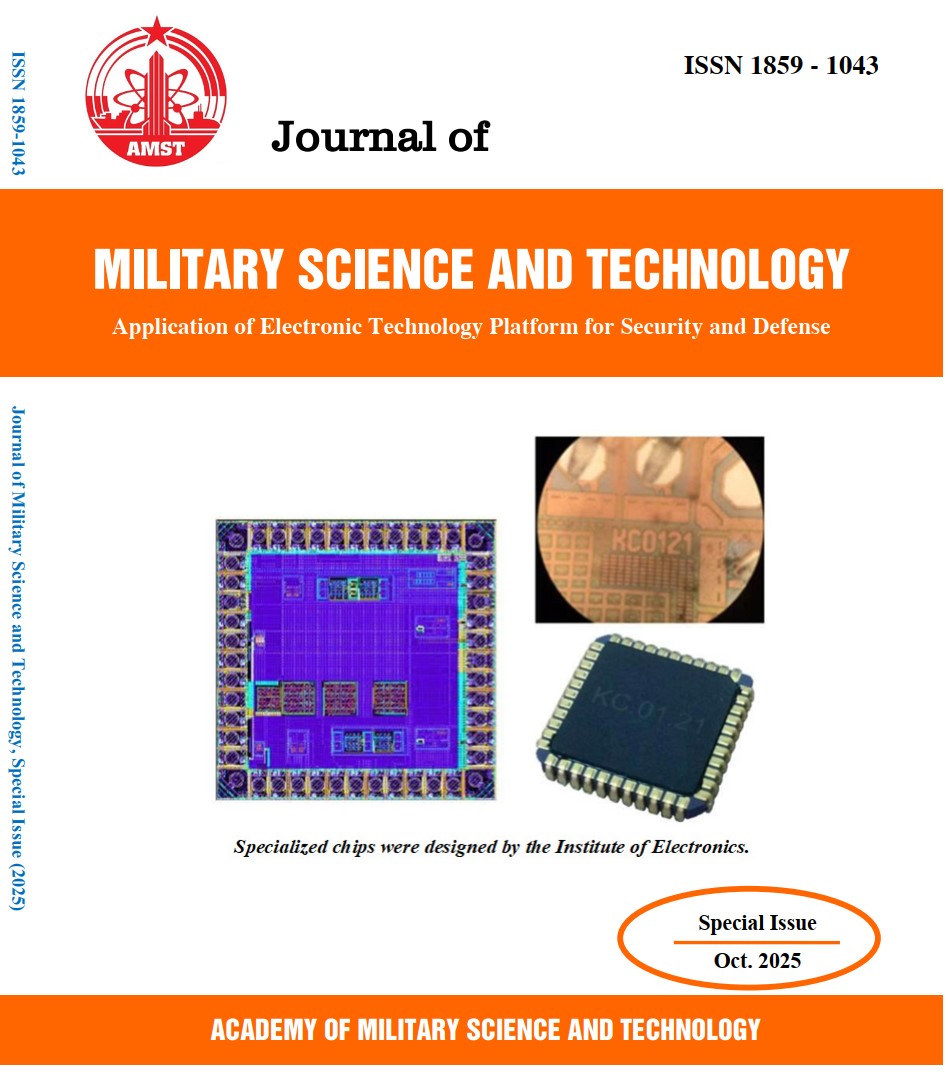Research on solutions to enhance trajectory quality in underwater autonomous navigation of unmanned underwater vehicles using IEKF SLAM algorithm for SONAR data
311 viewsDOI:
https://doi.org/10.54939/1859-1043.j.mst.IITE.2025.27-34Keywords:
Sonar; SLAM; AUV; IEKF.Abstract
The operation of remotely operated underwater vehicles in underwater environments always faces the challenge of lacking GPS signals, leading to the accumulation of positioning errors over time. This instability in motion significantly reduces the efficiency and safety of practical operations such as infrastructure inspection, seabed surveying, and search and rescue missions. This paper presents a Simultaneous Localization and Mapping (SLAM) method based on enhanced sonar data for the operational capability of underwater vehicles. The proposed algorithm fuses data from sonar with an inertial measurement unit (IMU) within an Iterated Extended Kalman Filter (IEKF) framework to optimize the vehicle's trajectory and correct for accumulated errors. By processing sonar data to extract features and then generating loop closure constraints to combine with motion estimates from odometry, the proposed model optimizes the entire trajectory of the vehicle and effectively corrects accumulated errors. The results obtained are highly accurate pose estimates and a consistent map of the operational environment throughout the voyage. The successful implementation of this algorithm demonstrates great potential in enhancing the autonomy, reliability, and operational efficiency of underwater vehicles in practical applications.
References
[1]. Zhang, Song, et al. "Visual SLAM for underwater vehicles: A survey", Computer Science Review, 46, 100510, (2022). DOI: https://doi.org/10.1016/j.cosrev.2022.100510
[2]. Li, Jie, et al. "Pose-graph SLAM using forward-looking sonar", IEEE Robotics and Automation Letters, 3, 3, 2330–2337, (2018). DOI: https://doi.org/10.1109/LRA.2018.2809510
[3]. Long, Hui, et al. "Underwater forward-looking sonar images target detection via speckle reduction and scene prior", IEEE Transactions on Geoscience and Remote Sensing, 61, 1–13, (2023). DOI: https://doi.org/10.1109/TGRS.2023.3248605
[4]. Song, Yan, et al. "Side scan sonar image segmentation and synthesis based on extreme learning machine", Applied Acoustics, 146, 56–65, (2019). DOI: https://doi.org/10.1016/j.apacoust.2018.10.031
[5]. Brossard, Martin, Axel Barrau, and Silvère Bonnabel. "Exploiting symmetries to design EKFs with consistency properties for navigation and SLAM", IEEE Sensors Journal, 19, 4, 1572–1579, (2018). DOI: https://doi.org/10.1109/JSEN.2018.2882714
[6]. S. Gode, A. Hinduja, and M. Kaess. "SONIC: Sonar image correspondence using pose supervised learning for imaging sonars", IEEE International Conference on Robotics and Automation (ICRA), Yokohama, Japan, (2024). DOI: https://doi.org/10.1109/ICRA57147.2024.10611678







